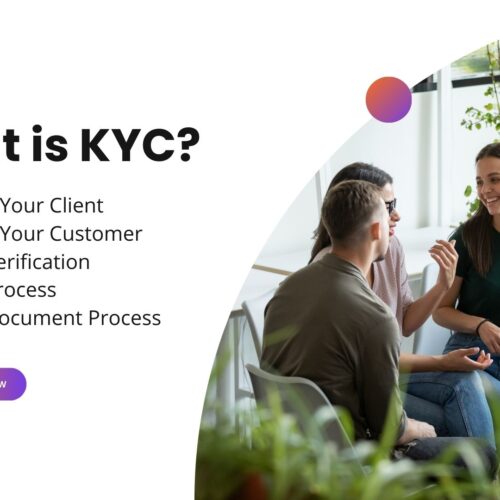Retailers, Retail, & Retailing. You’ve probably heard these terms before, but before you can understand what are retailers in marketing, you need to know what is retailing in marketing and what retail is.
Definition of Retail business:
Retail is the sale of goods or services by a business to consumers for their own use. Retailers deal in small quantities of goods, while wholesalers deal in bulk purchases. Don’t confuse retail transactions with online transactions. Goods must be sold directly to consumers from a single location for the end user.
Table of Contents
- Definition of Retail business:
- Definition of Retailers:
- Definition of Retailing:
- What are retailers in marketing?
- How do retailers work?
- The function of Retailers in Marketing:
- The function of retailers to consumers
- The function of retailers to wholesalers
- Types of Retailers in Marketing
- FAQs: Frequently Asked Question
Definition of Retailers:
A retailer is an individual or company that buys goods. Retailers typically do not manufacture their own products. They purchase products from manufacturers and wholesalers and sell them to consumers in small quantities. Essentially, a retailer or distributor is a business that sells goods such as clothing, groceries, or cars directly to consumers through various sales channels in order to make a profit. This dealer can operate in a physical building or online. Retailers are the consumer-facing part of the supply chain and most people interact with them frequently.
Definition of Retailing:
Retail is the distribution process of retailers who procure goods and services and sell them to customers for use. This process is described by the supply chain.
What are retailers in marketing?
The retail system has been around for years. It works like this. Manufacturers design and manufacture goods and products, but rarely sell or sell them directly to customers. Being able to produce goods is very different from being able to sell goods to end users. For this reason, most manufacturers stick to production.
Retailers are marketing, sales, and inventory experts and know their customers. They buy goods at cost from manufacturers and sell them to consumers at retail prices. The selling price can be 10-50% higher than the manufacturer’s cost. You can think of this as a marketing and advertising fee. Retailers spend millions of dollars on marketing campaigns to promote their products. These advertising budgets come from additional charges for products.
How do retailers work?
Retailers need to set up some forms to sell directly to consumers. This includes decisions about physical and digital locations, as well as how products are sold and connected to customers. Most modern retailers typically make strategic decisions based on:
- Type of business
- Target markets
- Optimal product range
- Customer service
- Market positioning
The function of Retailers in Marketing:
Below is the key function of retailers in marketing:
Buying:
After estimating customer demand, the retailer purchases various goods from various wholesalers. Retailer selects the best products from all wholesalers and all the products s/he brings under one roof. In this way, s/he fulfills his/her two functions of purchasing and assembling goods.
Storage:
Retailers keep product inventories and display them in stores.
Selling:
Retailers sell products in small quantities according to consumer demand and choice. They use efficient sales methods to increase sales.
Sorting and Packing:
Retailers sort products that are not sorted by manufacturers or wholesalers. They pack their products in small batches for consumer convenience.
Risk-bearer:
Retailers constantly keep product inventory in order to anticipate demand. You bear the risk of loss due to fire, theft, damage, price fluctuations, etc.
Transportation:
Retailers often bring products into their stores from wholesalers and manufacturers.
Financing:
Some retailers offer credit to customers and offer the option of returning or exchanging merchandise. In some cases, home delivery and after-sales service are provided by the retailer.
Sales Promotion:
Retailers display their products and carry out advertisements such as store decoration and show window design. They maintain direct and personal contact with consumers and persuades consumers to purchase goods through private sales.
Information:
Retailers educate consumers on how to use new and old products. They advise and guide consumers in making better product choices. They also provide market information to wholesalers and manufacturers.
The function of retailers to consumers
The following are the functions of retailers to consumers:
- Retailers offer consumers a variety of services such as Advice on the suitability and durability of goods, courier service, and after-sales service.
- In the case of complaints about product quality or quantity, consumers can be better and personally taken care of by retailers.
- Dealers stock many products from various manufacturers, giving consumers the opportunity to choose and check before making a purchase.
- Since consumers can purchase any quantity from retailers, consumers do not need to buy more than they need for their immediate needs, but they must purchase sufficient quantities from wholesalers or manufacturers. It is difficult when the financial strength is weak or when the storeroom is small.
- Retailers are in close contact with consumers, who often live in the same area, so they can get to know them better. Retailers are therefore in a better position to grant credit terms to consumers.
The function of retailers to wholesalers
Retailers assist manufacturers and wholesalers by physically distributing goods to consumers.
Retailers contact different consumers, research consumer preferences and specific requirements and report accordingly through wholesalers or directly to producers. This allows producers to improve the design and quality of their products.
The function of retailers to manufacturers
Retailers provide wholesalers and manufacturers with feedback on the latest changes in consumer’s need and preferences so they can make changes accordingly.
Types of Retailers in Marketing
A feature of department stores is the abundance of products. This means you can carry different types of goods such as hardware, clothing, and gadgets. Each type of product is typically displayed in different sections or departments within the store. Although the depth of the product mix varies by store, the main differentiator for department stores is the ability to offer a wide range of products in a single store. For example, people who shop at Big Bazaar can buy not only women’s, men’s, and children’s clothing, but also household items such as dishes and luggage.
Chain store
In the 1920s, the chain store movement developed. Due to the size of the chain, we were able to purchase a wide range of products at bulk discounts. The rebate has reduced the cost significantly compared to the retailer’s cost. This has allowed us to set lower retail prices than our smaller competitors, increasing our market share. In addition, chain stores have attracted a large number of customers due to their highly convenient locations that make use of their financial strength and location know-how.
Supermarkets
Supermarkets appeared in the 1920s and 1930s. For example, Piggly Wiggly Food Stores, founded by Clarence Saunders around 1920, introduced self-service and customer checkout. A supermarket is a large self-service shop with a central cash register. They carry a wide range of food and often non-food products. There are 37,459 supermarkets in the United States, and the average store today is about 46,500 square feet and carries nearly 44,000 products. The average customer visits your store less than twice a week and spends just over $30 per trip. The holistic approach supermarkets take to distribute groceries and household cleaning and care products is to stock large quantities of these items at minimal prices in each store.
Discount Retailers
Discount stores such as Ross Dress for Less and Grocery Outlet are characterized by an emphasis on price as their main selling point. The product range is generally wide, including both hard and soft, but the range is usually limited to the most popular items, colors and sizes. Traditional stores usually have long opening hours, Large self-service facility with free parking and relatively basic amenities. Online retailers like Overstock.com group their products and offer them at deep discounts. Typically, customers will sacrifice a reliable product range for deep discounts on available products.
Warehouse Operator
Warehouse providers offer a fraction of the shopping experience at very low prices. Costco is a leading warehouse retailer with sales of $79.7 billion in 2014. Warehouse retailers streamline all operational aspects of their business and pass efficiency savings on to their customers. Costco typically uses a Cost-Plus pricing structure and ships products in wholesale quantities.
Franchises
The franchise approach combines national chains with local ownership. An owner buys a franchise and gives it the right to use the company’s business model and brand for a certain period of time. Franchise agreements often include clear ownership, training, and ongoing support guidelines. An owner or franchisee builds and manages a local business. Each year, Entrepreneur magazine publishes a list of the top 500 franchises ranked by financial strength and stability, growth rate, and size.
Malls and Shopping Centers
Malls and shopping centers thrive by offering customers a wide range of products in many stores. If you want to buy a suit or dress, the shopping mall offers a variety of choices in one place. A shopping center is typically a large center with one or more department stores as main tenants. A mall is a common set of stores along a major thoroughfare, but an isolated location is an independent location, not necessarily in a high-traffic area. Remote stores will need to use advertising or other aspects of their marketing mix to attract shoppers.
Online Retailers
Online commerce is undoubtedly the dominant force in the retail industry, but today it represents a very small percentage of total retail sales. Companies such as Amazon and Geico conduct all or most of their sales online. Online marketing plays a key role in preparing shoppers to shop in your store. In a similar integrated approach, catalogs mailed to customers’ homes facilitate online ordering. A survey on the Land’s End website found that 75% of shoppers who made a purchase read the catalog first.
Catalog Retailers
Catalogs have long been used as a marketing tool to increase the phone and in-store sales. As online retail began to grow, it had a major impact on catalog sales. Many retailers relied on catalog sales. Industry professionals are beginning to realize that catalogs are changing, and so is their role in the retail marketing process. Despite a significant decline, US households still receive 11.9 billion catalogs each year.
Non-Store Retailers
Beyond the categories above, there is a wide range of traditional and innovative retail approaches. Avon Ladies have all but disappeared at the end of the last century, but there are still at-home sales such as Arbonne facial products, Cabi womenswear and WineShop at Home. Many of these models are based on the idea that women use their personal networks to sell products to their friends often in a party setting.
Further Reading: Click on the below link to read relevant articles.
FAQs: Frequently Asked Question
What are retailers and wholesalers?
The difference between retailers and wholesalers is that while retailers sell directly to consumers, wholesalers sell their goods to other businesses (including retailers).
What is the role of wholesalers and retailers in the channel of distribution?
A wholesaler is an intermediary company that buys products in bulk from manufacturers and resells them to retailers or sometimes end users themselves. Retailers are typically customers of wholesalers and provide end customers with meticulous customer service.
What is retailing in business?
Retail is the sale of small quantities of goods and services to customers in stores or online. Grocery stores, clothing stores, and drug stores are examples of retail stores.
What is the role of retailing?
The retailer’s goal is to achieve maximum satisfaction by exceeding expectations and providing excellent service.
What is the difference between sales and retail?
The main difference between sales and retail is that a sales company sells to customers and a retail company sells to the public.



